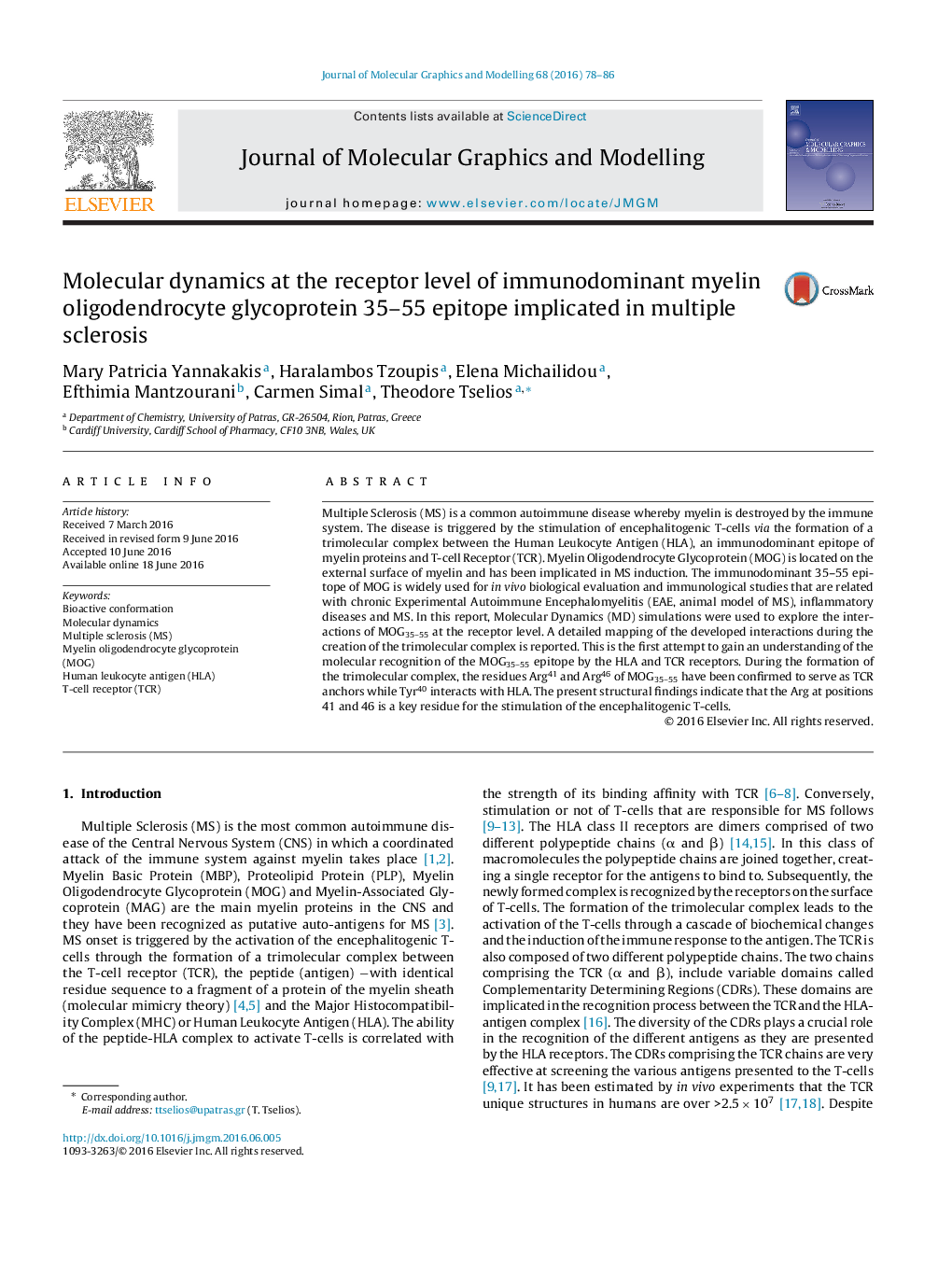| Article ID | Journal | Published Year | Pages | File Type |
|---|---|---|---|---|
| 443221 | Journal of Molecular Graphics and Modelling | 2016 | 9 Pages |
•The dominant form of hMOG35–55, throughout the MD simulation, is a non-extended conformation with two bends.•Conformational analysis of the TCR- hMOG35–55 −HLA DR2 complex revealed similar positioning with the MBP83–96 peptide.•The HB interactions between hMOG35–55 epitope and HLA DR2 are comparable to those of MBP83–96 with the same receptor.•Substitution of hMOG35–55 key residues Arg41 and Arg46, with Ala leads to decreased interactions with the TCR.
Multiple Sclerosis (MS) is a common autoimmune disease whereby myelin is destroyed by the immune system. The disease is triggered by the stimulation of encephalitogenic T-cells via the formation of a trimolecular complex between the Human Leukocyte Antigen (HLA), an immunodominant epitope of myelin proteins and T-cell Receptor (TCR). Myelin Oligodendrocyte Glycoprotein (MOG) is located on the external surface of myelin and has been implicated in MS induction. The immunodominant 35–55 epitope of MOG is widely used for in vivo biological evaluation and immunological studies that are related with chronic Experimental Autoimmune Encephalomyelitis (EAE, animal model of MS), inflammatory diseases and MS. In this report, Molecular Dynamics (MD) simulations were used to explore the interactions of MOG35–55 at the receptor level. A detailed mapping of the developed interactions during the creation of the trimolecular complex is reported. This is the first attempt to gain an understanding of the molecular recognition of the MOG35–55 epitope by the HLA and TCR receptors. During the formation of the trimolecular complex, the residues Arg41 and Arg46 of MOG35–55 have been confirmed to serve as TCR anchors while Tyr40 interacts with HLA. The present structural findings indicate that the Arg at positions 41 and 46 is a key residue for the stimulation of the encephalitogenic T-cells.
Graphical abstractFigure optionsDownload full-size imageDownload high-quality image (131 K)Download as PowerPoint slide
